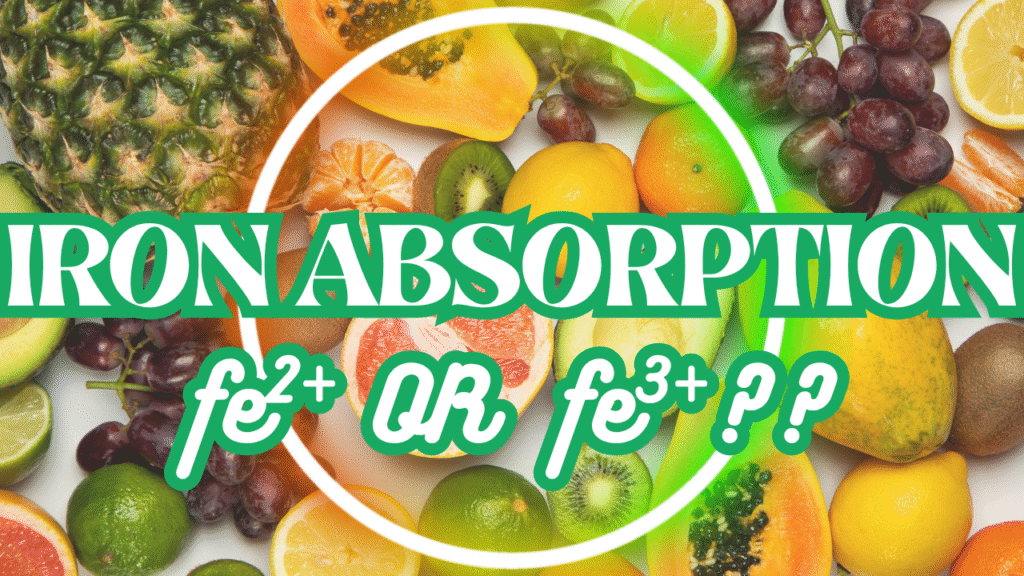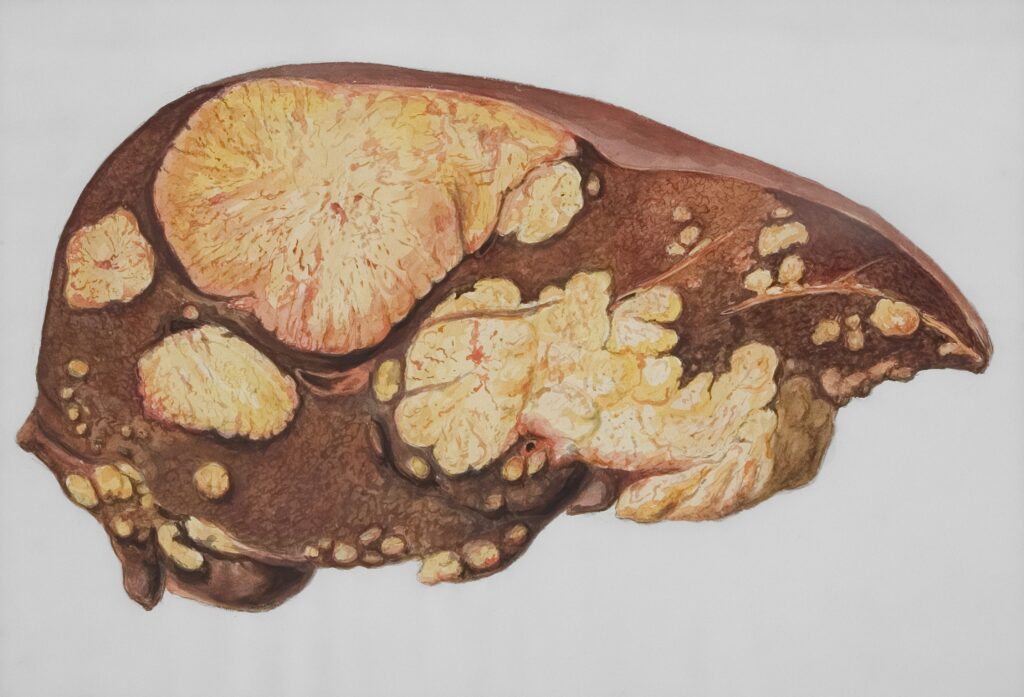
Iron is vital for the transport of oxygen, respiration & several biochemical functions due to its ability to form coordination complexes and switch between its ferrous (Fe2+) and ferric (Fe3+) forms. Iron is mainly distributed in two compartments in the body, The Functional compartment and the storage compartment.
- The functional compartment includes a number of compounds like haemoglobin, myoglobin, transferrin and enzymes, & others molecules that require iron as a cofactor or a prosthetic (ion or haem) group.
- The second is a storage compartment, which includes ferritin and haemosiderin acting as a body’s mineral reserves
Forms of Iron:
There are two forms of iron which gets absorbed which are:
- Haem iron: found in foods of animal origin (e.g. red meat, chicken and fish) in the form of haemoglobin or myoglobin.
- Non-haem (inorganic) iron: mainly found in foods of plant origin, cereals, and some foods of animal origin such as milk and eggs.
Absorption of haem iron (15% – 20%) is better than non-haem iron (5%).
Absorption of Non-Haem Iron:
Dietary non-haem or inorganic iron is usually found in Ferric form (Fe3+). Even though Fe3+ can be solubilized in the acidic environment of the stomach, it cannot be directly entered into enterocytes.
Thus, luminal Fe3+ needs to be reduced to Fe2+, This reaction takes place at the apical edge of enterocyte and accomplished enzymatically via ferric reductase enzyme (duodenal cytochrome B [Dcytb]) or with the aid of ascorbate (vitamin C), which is thought to enhance iron absorption.
Fe2+ is then passes through the apical enterocyte transporter DMT1 (divalent metal transporter 1).
Did you know?
“DMT1 is also responsible for the transport of other metallic ions such as zinc, copper and cobalt by means of a proton coupling mechanism”.
In the enterocyte, a small portion of iron is stored in the form of ferritin while the rest of Fe2+ is transported to plasma via the basolateral exporter ferroportin 1 (Ireg-1).
Exported Fe2+ is re-oxidized to Fe3+ by the protein hephaestin. As Fe3+ entered into the bloodstream it is captured by transferrin. Transferrin maintains Fe3+ in a redox-inert state and delivers it into tissues.
A substantial proportion of this iron also gets stored in the macrophage as ferritin. The macrophages export Fe2+ from their plasma membrane via ferroportin, through a process involving reoxidation of Fe2+ to Fe3+ by ceruloplasmin, followed by the loading of Fe3+ to transferrin.
Did you know?
“Some dietary components (phytates, polyphenols, fibers, tannins) and common pharmaceuticals (calcium supplements, antacids, proton pump inhibitors) form insoluble complexes with iron and thereby inhibit its absorption”.
Absorption of haem iron:
Haem iron is directly taken up by intestinal cells through a process called endocytosis, where haem-oxygenase (hox) breaks its ring to release ferrous iron (Fe2+), This Fe2+ follows same path of assimilated inorganic iron.
Hepcidin- The security guard of Iron:
The concentration of iron in body fluids is strictly regulated in order to maintain iron levels as needed & to avoid the toxicity, as excess iron can lead to the generation of reactive oxygen species which causes inflammation and irritation.
Hepcidin, a 25 amino-acid peptide hormone mainly expressed by the liver, plays a key role in the homeostasis of systemic iron level.
High level of iron, hypoxia, anaemia, erythropoiesis, infection and inflammation induce the expression of the iron regulatory hormone hepcidin in the liver, which inhibits iron absorption by suppressing intestinal ferroportin.
Hepcidin binds the cellular iron exporter, ferroportin (Fpn), inducing its internalization and degradation in hepatocytes, enterocytes, and macrophages, preventing iron transport to plasma and causing cellular retention of iron
Thus, Hepcidin acts as a negative regulator of iron entry into plasma.
Overexpression of hepcidin leads to the anaemia of chronic disease, while low hepcidin production results in hereditary haemochromatosis (HFE) with consequent iron accumulation in vital organs.
References:
Pantopoulos, K. (2024). Oral iron supplementation: New formulations, old questions. Haematologica. Advance online publication. https://doi.org/10.3324/haematol.2024.284967
Maladkar, M., Sankar, S., & Yadav, A. (2020). A novel approach for iron deficiency anaemia with liposomal iron: Concept to clinic. Journal of Biosciences and Medicines, 8(9), 27–41. https://doi.org/10.4236/jbm.2020.89003


